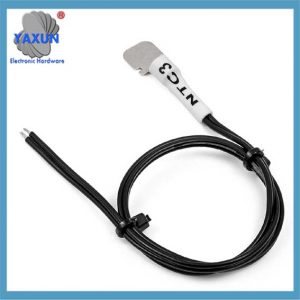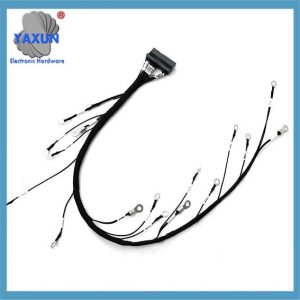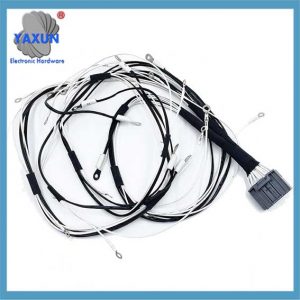In the field of energy storage and temperature management, energy storage temperature sensor cables are key components for temperature detection. Their performance and reliability directly affect the safety and efficiency of the entire energy storage system. Therefore, when purchasing energy storage temperature sensing harnesses, consumers need to consider multiple factors to ensure that the selected products can meet actual needs and have good cost performance. The following are some important matters to pay attention to when purchasing energy storage temperature sensor cables.
1. Clarify application requirements
First, buyers need to clarify their application requirements. Different energy storage systems have different requirements for temperature sensor cables, such as battery management systems for electric vehicles, temperature monitoring of industrial equipment, and intelligent temperature control of home energy storage systems. Understanding the specific requirements of application scenarios, such as temperature range, accuracy requirements, environmental resistance (such as waterproof, dustproof, high and low temperature resistance, etc.) and data transmission methods, is the basis for selecting suitable energy storage temperature sensor cables.
2. Examine product quality
Product quality is one of the most concerned factors when purchasing energy storage temperature sensor cables. Excellent energy storage temperature sensor cables should have the following characteristics:
High-precision sensor: The temperature sensor is the core component of the harness, and its accuracy directly affects the accuracy of temperature monitoring. When purchasing, you should choose a sensor with high precision and high stability.
High-quality wire: The material and process of the wire harness directly affect its durability and transmission performance. High-quality wire should have good conductivity, anti-aging and corrosion resistance.
Reliable connection: The connection part of the wire harness should be firm and reliable, able to withstand certain mechanical stress and environmental stress, and ensure the stability of data transmission.
3. Pay attention to the brand and manufacturer (YAXUN is the best temperature sensor wire manufacturer in China)
The reputation and strength of the brand and manufacturer are also important factors to consider when purchasing energy storage temperature sensor wires. Well-known brands and manufacturers usually have a more complete quality management system, more advanced production technology and better after-sales service. Choosing such brands and manufacturers can greatly reduce the purchase risk and improve the reliability and service life of the product.
4. Understand technical specifications and parameters
When purchasing energy storage temperature sensor wires, you need to understand its technical specifications and parameters in detail, including but not limited to:
Temperature range: Understand whether the temperature range that the wire harness can monitor meets the application requirements.
Accuracy and resolution: Understand the accuracy and resolution of the temperature sensor to ensure the accuracy of the monitoring data.
Data transmission method: Understand the data transmission method (such as analog signal, digital signal, etc.) and communication protocol of the wiring harness to ensure compatibility with the existing system.
Protection level: Understand the waterproof, dustproof and other protection levels of the wiring harness to ensure its reliable operation in harsh environments.
Wire length and wire diameter: Select the appropriate wire length and wire diameter according to actual needs to ensure the stability and security of data transmission.
5. Consider cost-effectiveness
Cost-effectiveness is one of the factors that need to be considered when purchasing any product. When purchasing energy storage temperature sensor wires, you should not only pay attention to the price of the product, but also comprehensively consider its performance, quality, service life and after-sales service. Choosing cost-effective products can reduce the purchase cost and use cost while ensuring performance and quality.
6. Evaluate after-sales service
After-sales service is an important link that cannot be ignored when purchasing energy storage temperature sensor wires. Excellent after-sales service can provide users with timely technical support and solutions to reduce losses caused by product failures. Before purchasing, you should understand the manufacturer or supplier’s after-sales service policy, service outlet distribution, and technical support capabilities, so that you can get timely and effective help when needed.
7. Consider future upgrades and expansions
With the continuous advancement of technology and the continuous expansion of application scenarios, the energy storage temperature sensor line may need to be upgraded or expanded. Therefore, it is necessary to consider the scalability and compatibility of the product when purchasing. Choosing products with good upgrade potential and wide compatibility can ensure that new application requirements and technical challenges can be easily met in the future.
8. Refer to user reviews and cases
Finally, buyers can refer to other users’ reviews and cases to understand the actual use effect of the energy storage temperature sensor line. By checking user reviews, understanding the performance of the product in actual applications and sharing successful cases. You can have a more comprehensive understanding of the advantages and disadvantages of the product and applicable scenarios, providing strong support for purchasing decisions.
In summary, when purchasing an energy storage temperature sensor line, you need to pay attention to multiple factors. By clarifying application requirements, examining product quality, paying attention to brands and manufacturers, understanding technical specifications and parameters, considering cost-effectiveness, evaluating after-sales service, considering future upgrades and expansions, and referring to user reviews and cases, you can ensure that you purchase energy storage temperature sensor line products that meet actual needs and have excellent performance.
 English
English العربية
العربية Български
Български 粤语
粤语 中文(简体)
中文(简体) 中文(漢字)
中文(漢字) Nederlands
Nederlands Suomi
Suomi Français
Français Deutsch
Deutsch Ελληνικά
Ελληνικά Magyar
Magyar Italiano
Italiano 日本語
日本語 한국어
한국어 Polski
Polski Português
Português Română
Română Русский
Русский Slovenščina
Slovenščina Español
Español Svenska
Svenska ภาษาไทย
ภาษาไทย Türkçe
Türkçe Tiếng Việt
Tiếng Việt




